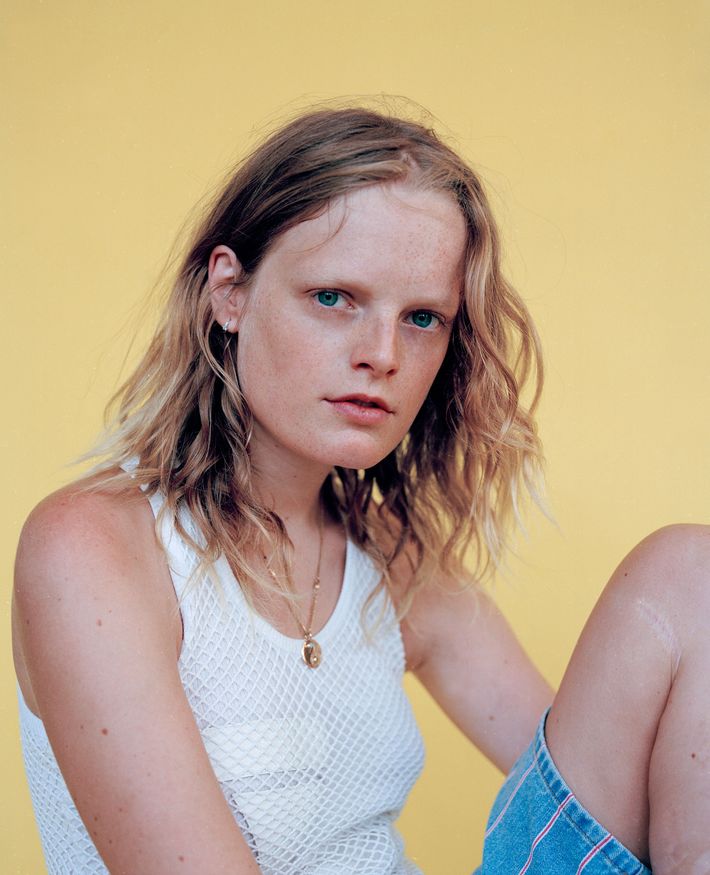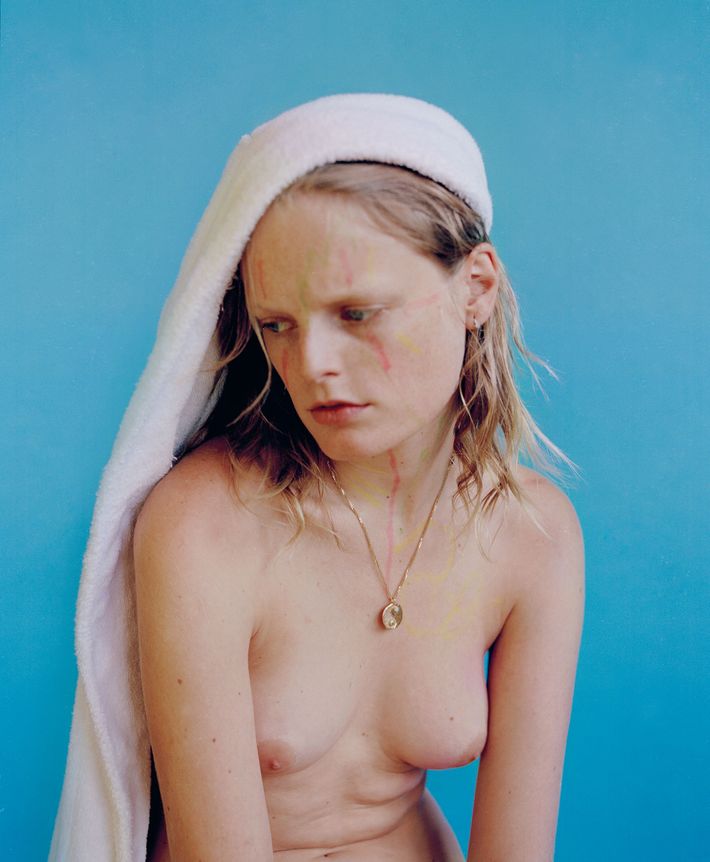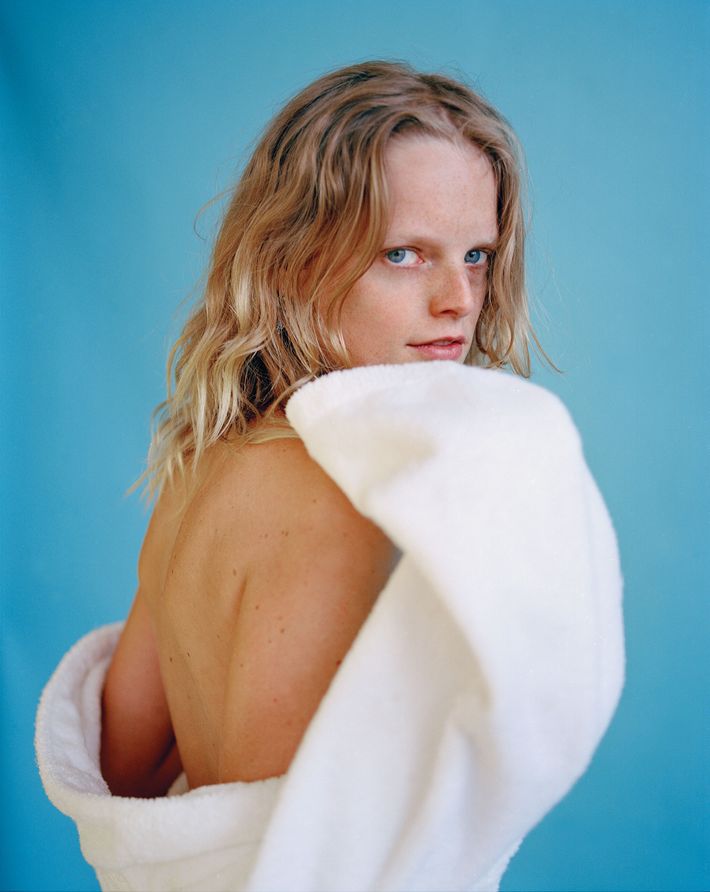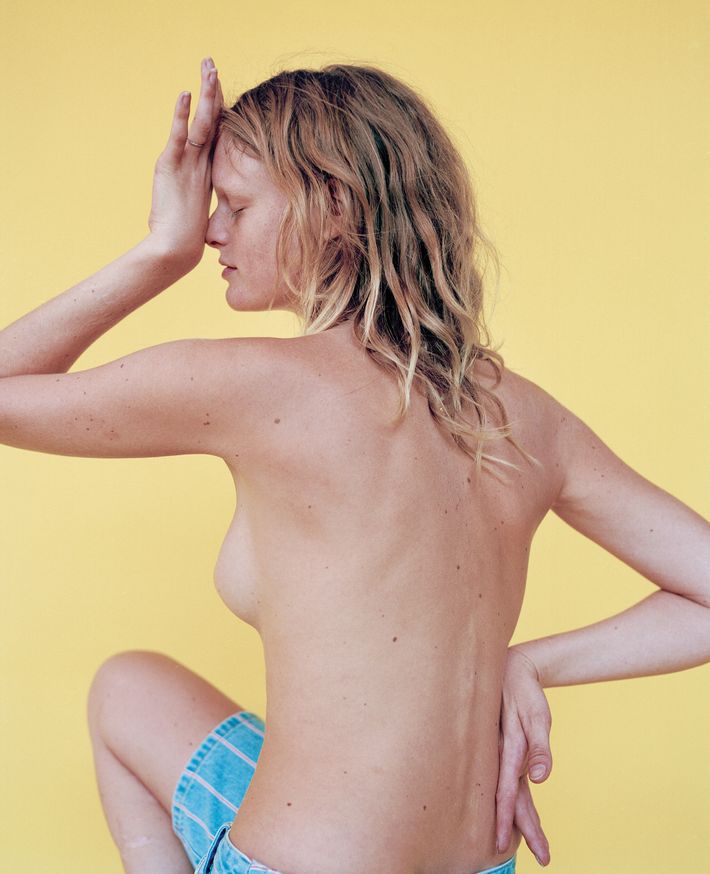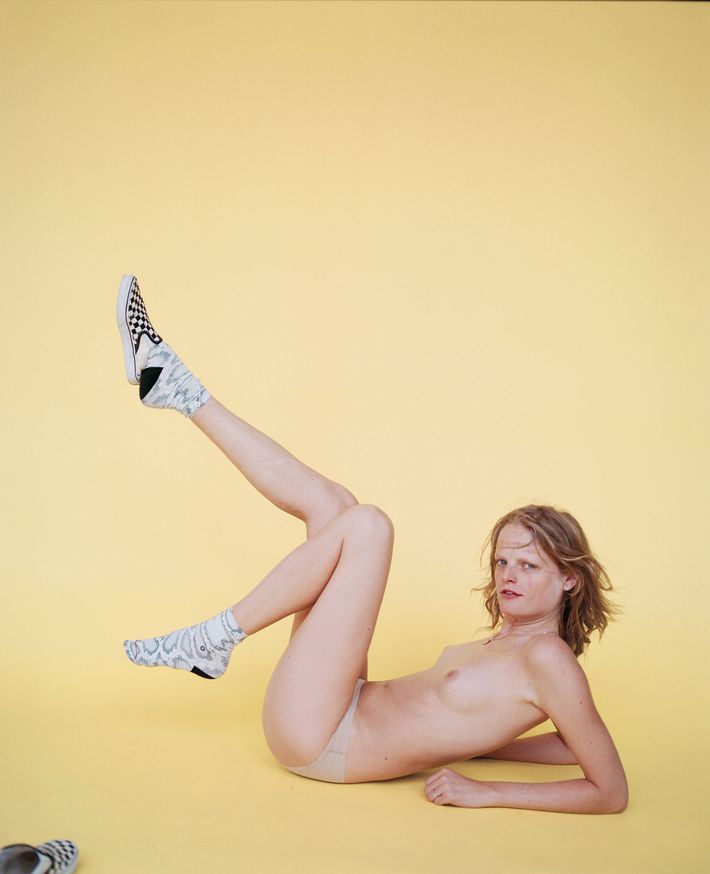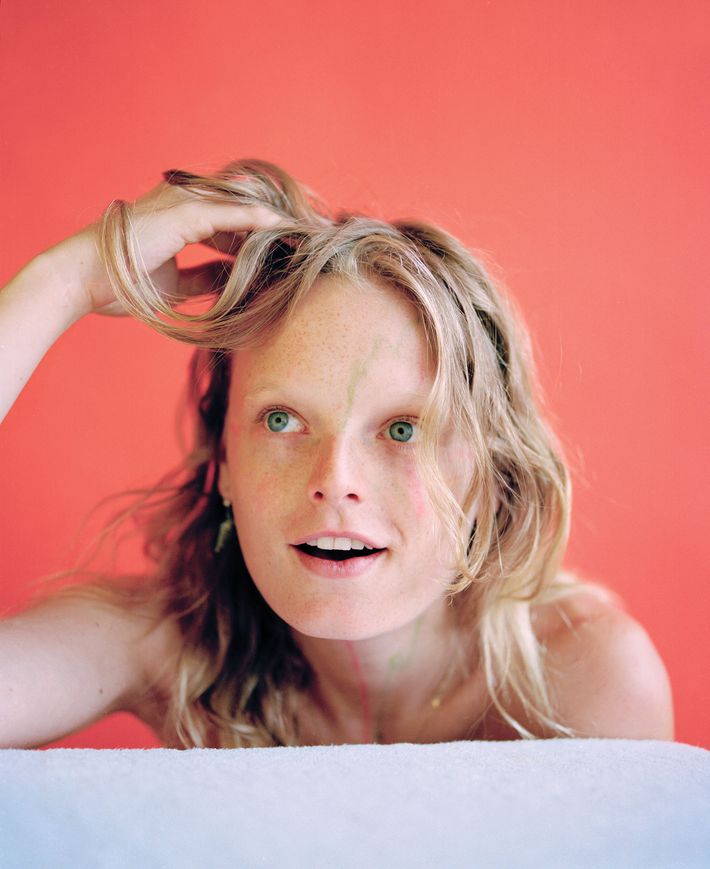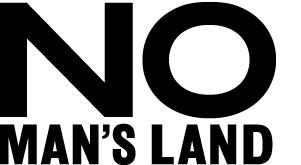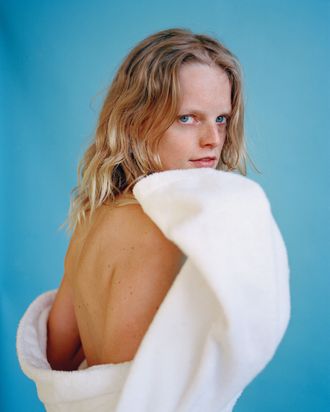
This week, women’s social club The Wing launches No Man’s Land, its first print magazine, with stories rolling out exclusively on the Cut.
For the last 12 years, Belgian model Hanne Gaby Odiele has been a mainstay in the fashion industry. A favorite of designers like Alexander Wang and Dries Van Noten, she is known for her insanely cool attitude on (and off) the runway, where her eclectic taste has also made her a favorite of street-style photographers. In person, she is warm and funny, the kind of girl you immediately want to be friends with.
Earlier this year, Hanne went public with her status as a person born with intersex traits, talking about the operations and procedures she had to undergo as a young girl. The term intersex applies to a wide range of characteristics in a person’s reproductive or sexual anatomy that does not fit the typical definitions of male or female. It is estimated that as many as 1.7 percent of the population is born this way, and historically, doctors have attempted to “fix” these characteristics through operations that are largely unnecessary, in order to make the person fit inside the gender binary.
Hanne, one of the few public figures that have “come out” as intersex, has partnered with InterAct, an organization that advocates for intersex youth and aims to end the harmful medical interventions that have become standard.
You just got back from an intersex conference in Arizona. Activism is something that you’ve been doing often lately. What was your take-away from the conference?
It was great. There were a few hundred people from the community there. This was the first time that I [spent time with] mostly people from the community, it was more like a support group.
What’s been the most unexpected or surprising thing for you since you began your advocacy work?
Two days ago, I had to charge my phone in a bar after I came back from a talk that I did for Out Leadership. All of a sudden the bartender looks at me, starts crying, and says, “Oh my god!” He was intersex. He stopped his shift, we had a drink together, and he [told me] his whole story.
What made you decide that you wanted to go public and become an activist?
Reading the [online] forums. There was a 13-year-old girl saying that she has osteoporosis because she underwent surgery two years prior. For instance, in my case, I had my testicles taken out which means my natural hormones were taken out of my body, so I have to get hormonal replacement therapy. Hormonal replacement therapy is not the same as what my body makes, so there are side effects, and one of them is actually menopause.
[During] menopause, a lot of women get osteoporosis, so the risk of osteoporosis in intersex people is pretty high. This 13-year-old girl says, “I have the bone mass of an 80-year-old because I underwent surgery two years ago.” I thought, “Oh my god, this is still happening.” I thought [the operations had] stopped in the 2000s but no. That for me was a turning point. I saw there was some good stuff happening in the trans community that I was really excited about, and I thought maybe I could use my platform to actually do something for my community as well.
What was the process like once you decided to go public?
I reached out to InterAct around two years ago. I also got a PR company last year to help me get my message developed and be able to talk about it in a way that is not too emotional for me. They taught me how to speak the proper way because you have to be careful that you include everybody, and you don’t want to use the wrong terms. The words are very important. Also, [they taught me] that you can just tell whatever you want to tell. I don’t have to tell the most traumatic stuff necessarily, that’s not for everyone to know.
What happened when you told your agency and the people you work with?
Everybody was straight away very supportive. It’s kinda like, “Why did I wait so long?” It feels so good to be able to live my truth, but it’s difficult because I’ve always been told not to talk about it. As a child, we were always told, “Don’t talk about these doctor visits, nobody will understand, nobody will accept her, she will get bullied, she won’t find a partner.”
Many people have this fear of never being loved and then also there’s the trauma as well. That’s why I want to talk about it, to make sure that intersex people can know that [they] can have a normal life and do whatever they want to do. My husband, John, [came to the most recent conference] too. It was very cool for people to see that I had my spouse there. Being intersex is not the problem. I love actually being intersex. I would never wish to be any different, it’s just the way that I was treated as a child that I don’t agree with. Hopefully we can change that now.
I read that your parents felt some guilt about the things that happened in your youth. Do you think this work that you’re doing now has changed your relationship with your family?
My parents are super proud of what I do. I never blamed them. They were working with the best doctors in [Belgium], and that’s what the doctors advised them to do. They never got the actual diagnosis, and they couldn’t ask for a second opinion anywhere. There was no internet, there was no community online, there was nothing.
I remember going to the doctor, going through unspeakable examinations. It’s really, really, really horrible. When my parents saw this happening, it affected them as well. Now that they can read that it’s helping other people, they’re so happy and proud. They get messages too from people that are super happy that I [went public].
Do you have any role models?
Right now I’m really looking up to Chelsea Manning. I don’t know how she’s doing it. But in general, I don’t really have any role models. I used to be like, “Oh, I like this person,” then as I got older and looked up things [about them] I would get disappointed. But Chelsea Manning, I’m a big fan. She is my inspiration right now.
